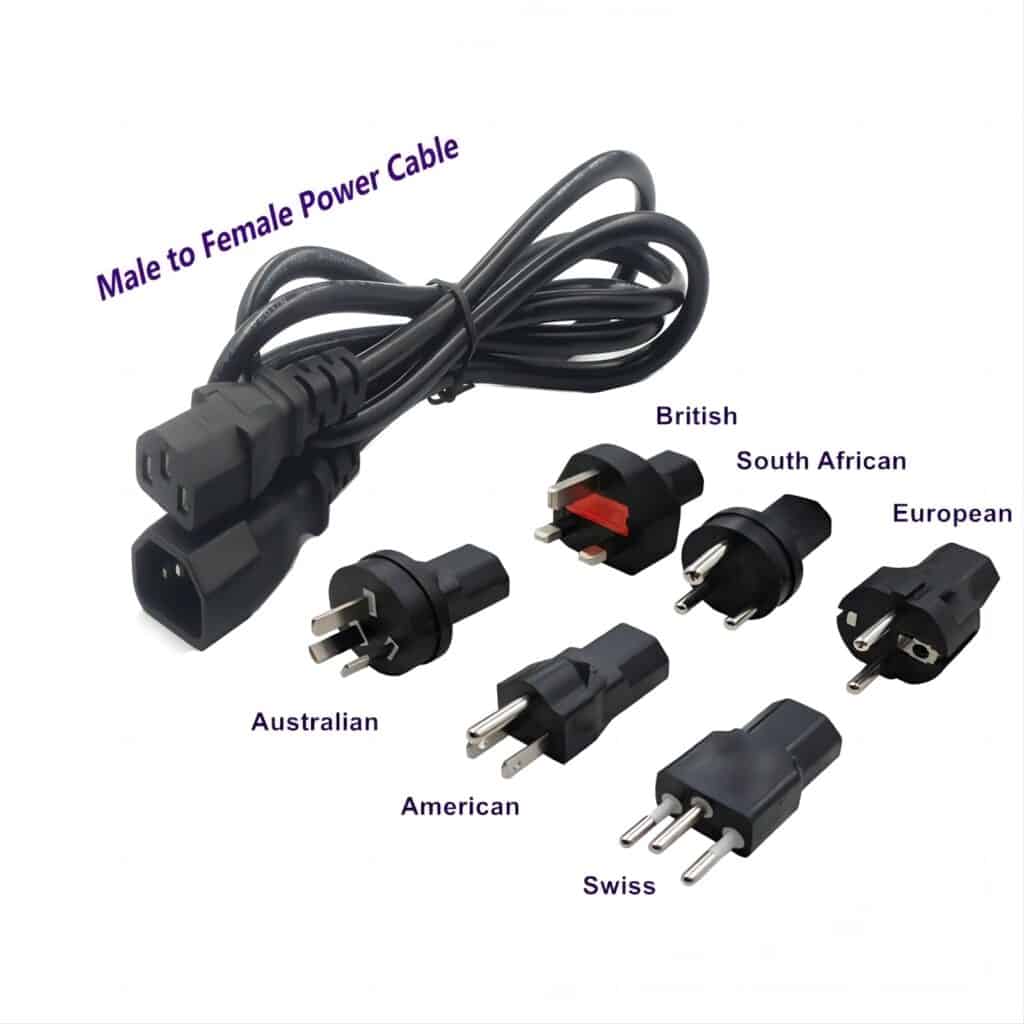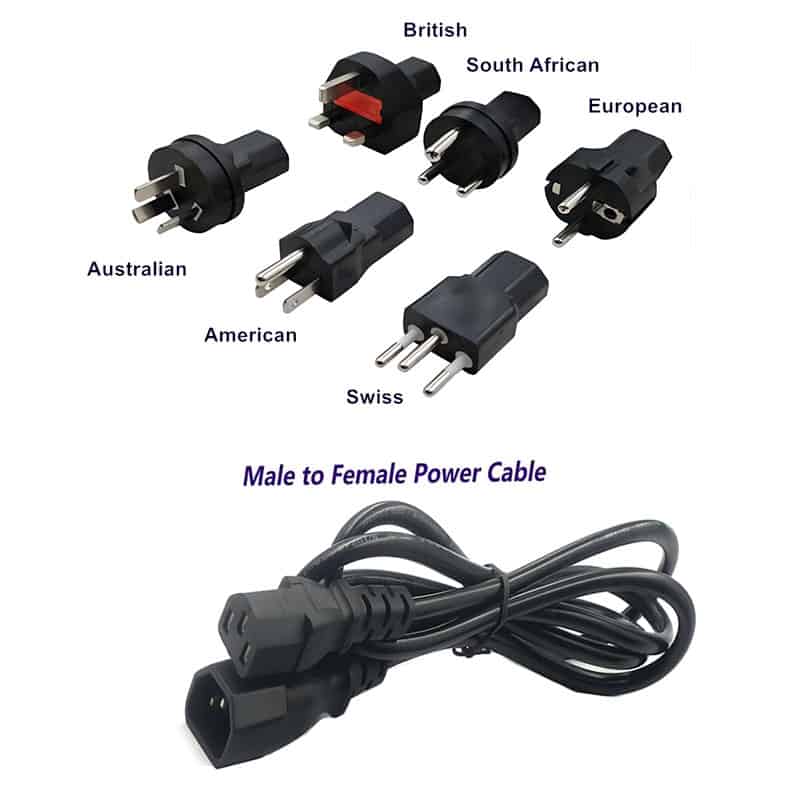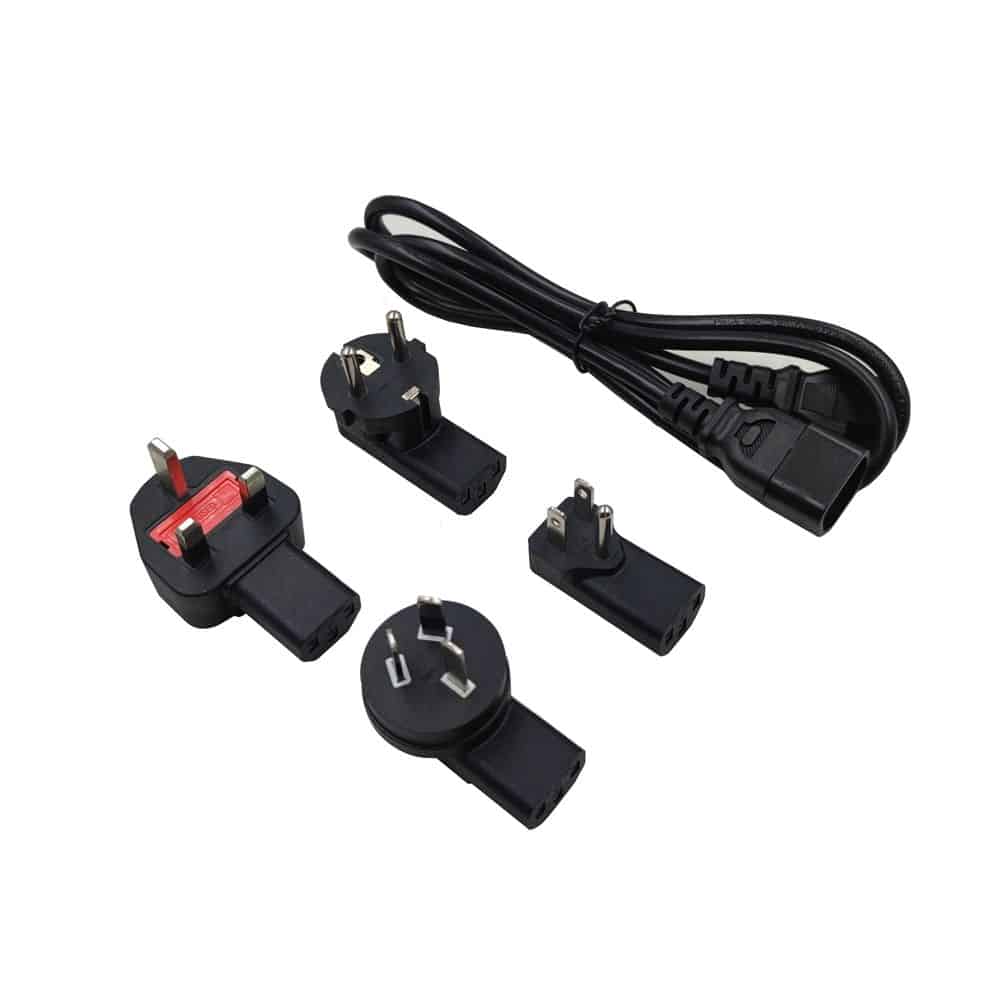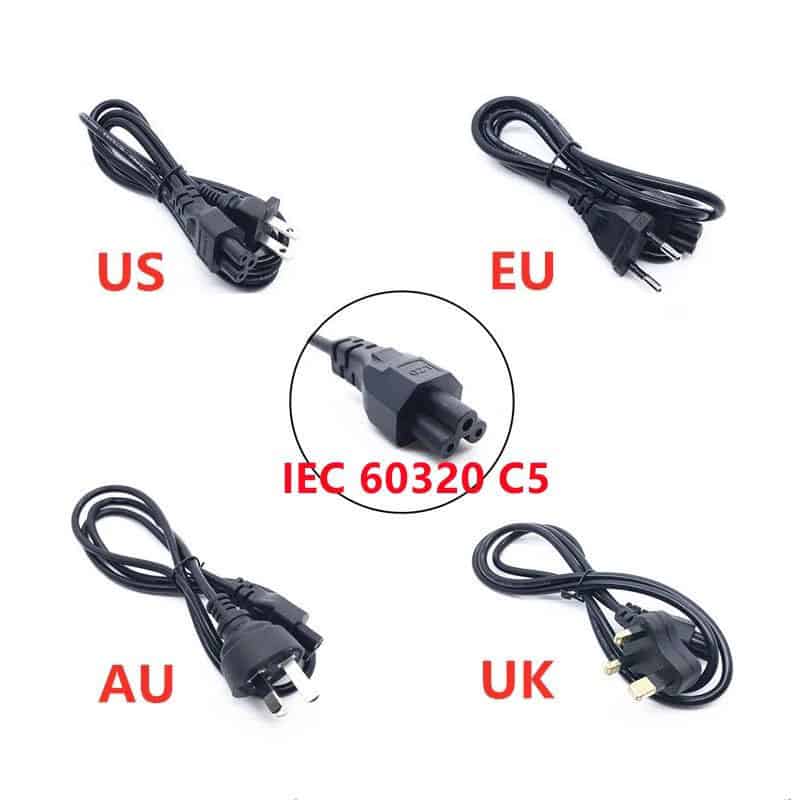Choosing the wrong power cable plug for a receptacle can cause your device not to work or create a safety hazard. Selecting the right plug is important for safety and compatibility.
The type of plug you need depends on the standard for receptacles in your country and the voltage rating of the device.
Now let’s talk about how to figure out what kind of plug you need for your receptacle.

How do I know what plug to use?
Each country has different plug standards, categorized by types (A, B, C, etc.). You should match the plug type with the country’s socket standard. Additionally, ensure that the plug matches the voltage and current requirements of your device.
For instance, the USA uses Type A and B plugs, while Europe predominantly uses Type C and F plugs. Mismatching plugs and voltages can cause electrical damage, so checking these details is critical.
What plug type is used in the USA?
The USA uses Type A (two flat parallel pins) and Type B (two flat pins with a grounding pin). Type B is typically used in locations where grounding is required for safety, such as in kitchens and bathrooms. The standard voltage is 120V, and many U.S. devices are designed to operate within this voltage range.
If you are traveling from another country, ensure your plug is compatible with U.S. sockets, or use a plug adapter and possibly a voltage converter.

What plug type is used in Europe?
Europe primarily uses Type C (two round pins) and Type F (two round pins with grounding clips on the sides). The voltage standard in Europe is 230V, significantly higher than the 120V used in the USA. This means that in addition to a plug adapter, travelers may need a voltage converter to ensure their devices can safely operate.
Countries across Europe typically use these plug types, making Type C a common and widely accepted plug for most European countries.
What plug type is used in Australia?
Australia uses Type I plugs, which feature three flat pins arranged in a triangular pattern. The country operates at 230V, which is similar to the voltage used in Europe but higher than in North America.
Devices from countries using lower voltage systems, such as the U.S., will require a voltage converter in addition to a plug adapter to function safely in Australia.
How to choose plug sockets?
Choosing the right plug socket depends on several factors. You must match the plug type to the socket standard in your country or region. Additionally, check the electrical rating of the socket to ensure it can handle the voltage and current required by your device.
For specialized environments, such as outdoor installations or industrial setups, you may need sockets with waterproofing or enhanced grounding features to ensure safety.

What is Type A and B plug sockets?
Type A plugs have two flat parallel blades and are most commonly used in the USA, Japan, and Canada. These plugs are typically ungrounded, making them suitable for low-power devices like lamps or chargers.
Type B plugs, on the other hand, feature a third grounding pin. This extra pin is used in devices that require grounding for additional safety, such as larger appliances and power tools. Type B sockets are designed to accept both Type A and Type B plugs, offering more versatility.
Are US and China plugs the same?
No, US and China plugs are not identical. Both countries use Type A plugs, but China also uses Type I plugs, which are not found in the U.S. Moreover, China’s electrical system operates at 220V, while the U.S. uses 120V.
This voltage difference means that using U.S. devices in China may require not only a plug adapter but also a voltage converter to ensure safe operation.
How do I choose a plug?
To choose the right plug, start by identifying the socket standard in the country or region where you’ll be using it. Match the plug to the socket type and ensure that it can handle the appropriate voltage and current for your device.
Travelers often benefit from using a universal plug adapter that can work across multiple plug types, making it easier to switch between different socket standards.

How to identify a power plug?
To identify a power plug, look for the number of pins, the shape of the pins (flat, round, or rectangular), and the overall configuration. Plugs with three pins typically include a grounding pin (e.g., Type B or Type F), which is essential for devices that require additional safety measures.
Additionally, check the voltage rating on the plug to ensure it matches your device’s requirements. Voltage ratings are usually marked on the plug or the device itself.
How do I know what size plug I need?
The size of the plug is determined by the amperage and voltage requirements of your device. Larger plugs are generally needed for high-power devices, such as kitchen appliances or industrial machines, which may require 13A, 16A, or higher-rated plugs.
Smaller plugs are more appropriate for devices with lower power demands, such as phones or laptops, which usually operate on 5A or 10A plugs.

Which plug is recommended?
For most European and Asian countries, Type C plugs are widely recommended due to their common use in many regions. For North America, Type A and Type B plugs are the standard and work with most domestic devices.
For travelers, universal plugs that are compatible with multiple socket types offer the best versatility, especially when moving between regions with different electrical standards.
Final Words:
Understanding power cord plug types and voltage is essential for compatibility and safety when using sockets. Always check the local standards.













